#WagadInfraprojects
Explore tagged Tumblr posts
Text
Wagad Infraprojects - Excellence in Highway, Bridge, and Ready Mix Concrete Solutions
Discover how Wagad Infra, a leading construction company in Ahmedabad, is revolutionizing the industry through cutting-edge technology and sustainable practices. Explore their innovative projects and commitment to excellence in infrastructure development.
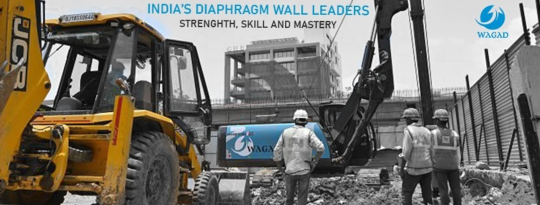
#HighwayConstruction#ConcreteWalls#ConstructionExcellence#WagadInfraprojects#DiaphragmWalls#BridgeEngineering#CivilEngineering
2 notes
·
View notes
Text
The Role of Construction Management in D-Wall Construction Projects
In the rapidly evolving construction industry, effective management is crucial for the success of any project. This is particularly true in specialized fields such as diaphragm wall construction. D-Wall construction companies in India are at the forefront of this niche, leveraging advanced techniques and management strategies to deliver high-quality infrastructure. This article explores the significance of construction management in D-Wall projects and highlights the importance of collaborating with a reliable diaphragm wall company in Noida and Gurgaon.

Understanding D-Wall Construction
Diaphragm walls, or D-Walls, are robust underground structures constructed to support deep excavations and create a barrier against groundwater. Typically made of reinforced concrete, these walls are integral to urban development, especially in densely populated areas. Construction management plays a vital role in ensuring that these complex structures are built efficiently and safely.
The Importance of Construction Management
Planning and SchedulingEffective construction management begins with meticulous planning. In D-Wall construction, it is essential to create a comprehensive schedule that outlines all project phases, including site preparation, excavation, and wall installation. By working with a D-Wall construction company in India, stakeholders can develop a realistic timeline that accounts for potential delays due to weather, material availability, and other unforeseen challenges.
Cost ManagementBudgeting is a critical aspect of any construction project. Construction management professionals assess costs at every stage of the D-Wall project, from initial design to final construction. By tracking expenses and ensuring resources are allocated efficiently, companies can minimize waste and adhere to budget constraints, ultimately maximizing profitability.
Quality ControlQuality assurance is paramount in D-Wall construction. A dedicated construction management team implements strict quality control measures to ensure that materials and workmanship meet industry standards. Regular inspections and testing help identify issues early, reducing the risk of costly rework and ensuring the durability and reliability of the diaphragm walls.
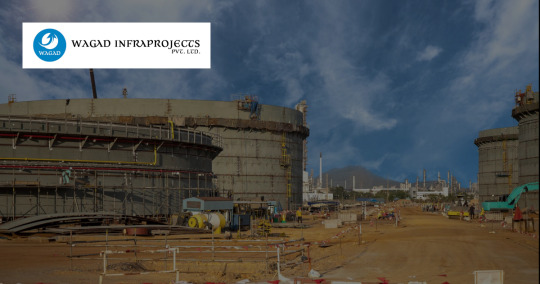
Risk ManagementConstruction projects inherently involve various risks, from site safety to regulatory compliance. Construction managers are responsible for identifying potential hazards and developing strategies to mitigate them. This proactive approach is particularly important in urban environments where D-Wall construction can impact surrounding structures and infrastructure.
Coordination and CommunicationEffective communication between all parties involved in a D-Wall project is crucial. Construction management facilitates collaboration among architects, engineers, contractors, and subcontractors, ensuring that everyone is aligned on project goals and timelines. This coordination is especially important when working with a diaphragm wall company in Noida and Gurgaon, where local regulations and site conditions may vary.
Conclusion
In summary, construction management plays a pivotal role in the success of D-Wall construction projects. By ensuring meticulous planning, cost management, quality control, risk mitigation, and effective communication, construction managers enable D-Wall construction companies in India to deliver projects that meet client expectations and industry standards. As urban development continues to grow, the demand for skilled construction management professionals will only increase, making it essential for companies to invest in this critical area of their operations.By choosing a reliable diaphragm wall company in Noida and Gurgaon, clients can ensure that their D-Wall projects are managed with the highest level of expertise, leading to successful and sustainable construction outcomes.
#diaphragmwalls#constructionexcellence#infrastructuredevelopment#bridgeengineering#wagadinfraprojects#concretewalls#highwayconstruction#civilengineering#undergroundconstruction#construction planning
0 notes
Text
Diaphragm Wall Construction in the Mining Industry: Applications and Challenges
Diaphragm wall construction plays a pivotal role in the mining industry, particularly in Diaphragm Wall Construction in India, where geological complexities and groundwater issues are prevalent. This technique provides essential support and stability for underground mining operations. In this article, we will explore the applications, challenges, and the significance of diaphragm wall construction companies in Noida and Gurgaon.

Applications of Diaphragm Wall Construction in Mining
Underground Support: Diaphragm walls offer vital structural support for mining shafts, ensuring safety during excavation.
Groundwater Control: These walls act as barriers against high groundwater levels, preventing water from disrupting mining activities.
Soil Stabilization: In fragile geological areas, diaphragm walls stabilize soil, allowing safe operations in challenging environments.
Environmental Protection: By containing hazardous materials, diaphragm walls also mitigate the risk of groundwater contamination.
Challenges in Diaphragm Wall Construction
Despite their advantages, diaphragm wall construction faces challenges:
Geological Complexity: Variations in soil and rock formations require advanced engineering solutions and skilled labor.
Specialized Equipment: The need for hydraulic grabs and slurry mixing units demands a significant investment in machinery and training.
Time Constraints: Mining projects often operate under tight timelines, making effective project management crucial.
Cost Implications: While initial costs are high, the long-term benefits of stability and safety are worth the investment.

Diaphragm Wall Construction Companies in India
In India, numerous companies specialize in diaphragm wall construction. Particularly in Noida and Gurgaon, these firms provide innovative solutions tailored to the mining sector's needs. They offer comprehensive services, from design to execution, ensuring that mining operations are safe and efficient.
Conclusion
Diaphragm wall construction is vital for modern mining infrastructure in India. Despite the challenges faced, specialized companies in Noida and Gurgaon are equipped to deliver effective solutions. By investing in diaphragm wall construction, mining companies can enhance the safety and longevity of their operations.For more insights on diaphragm wall construction, explore the expertise offered by leading diaphragm wall construction companies in India.
#diaphragmwalls#constructionexcellence#infrastructuredevelopment#DiaphragmWallConstructioningurgaon#wagadinfraprojects#construction planning#undergroundconstruction#bridgeengineering#highwayconstruction#civilengineering#concretewalls#Noida Diaphragm wall
0 notes
Text
What are the primary environmental concerns associated with diaphragm wall construction?
The primary environmental concerns include:
Soil and Groundwater Pollution: The construction process can lead to contamination of soil and groundwater from chemicals used in the slurry and from potential leaks.
Waste Generation: Large amounts of construction waste and spoil can be generated, which needs to be managed properly to avoid environmental harm.
Noise and Vibration: The construction process can produce significant noise and vibrations, potentially affecting nearby residential and commercial areas.
#concretewalls#constructionexcellence#diaphragmwalls#infrastructuredevelopment#highwayconstruction#wagadinfraprojects#bridgeengineering#civilengineering#undergroundconstruction#construction planning
0 notes
Text
What are the latest advancements in diaphragm wall construction that Wagad Infra is adopting?
Wagad Infra is adopting advancements such as:
Innovative Materials: Using high-strength concrete and advanced reinforcement techniques.
Modern Construction Techniques: Incorporating automated machinery and digital tools for precise construction.
Sustainable Practices: Embracing eco-friendly materials and methods to reduce environmental impact.
#diaphragmwalls#concretewalls#highwayconstruction#constructionexcellence#wagadinfraprojects#infrastructuredevelopment#bridgeengineering#construction planning#undergroundconstruction#civilengineering
0 notes
Text
The Rise of Diaphragm Wall Construction in India: A Foundation for Growth
In the evolving landscape of infrastructure development in India, diaphragm wall construction has become a critical technique, enhancing the foundation and stability of large-scale projects. Diaphragm Wall Construction in India plays a pivotal role as the country continues to invest in ambitious infrastructure initiatives. Understanding the role and benefits of diaphragm walls is crucial for stakeholders and industry professionals.
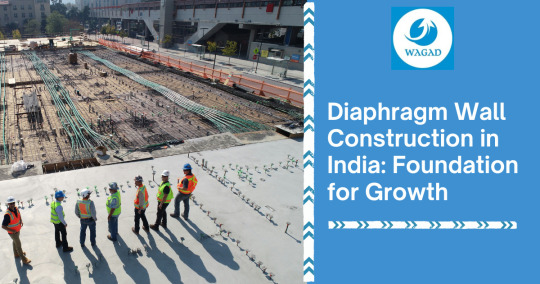
What is Diaphragm Wall Construction?
Diaphragm wall construction is a method used to create deep vertical barriers in the ground. These walls are typically made of reinforced concrete and are used to support and stabilize structures, especially in areas with challenging soil conditions or high water tables. The technique involves the excavation of a trench, which is then filled with concrete to form a continuous wall.
Why Diaphragm Walls are Gaining Popularity in India
Urbanization and Infrastructure Demands: India's rapid urbanization has increased the demand for high-rise buildings, metro systems, and underground constructions. Diaphragm walls are particularly valuable in such projects due to their ability to provide robust support in complex soil conditions.
Soil and Water Management: Many urban areas in India have challenging soil conditions and high groundwater levels. Diaphragm walls effectively manage these conditions by preventing water ingress and ensuring the stability of excavations.
Cost-Effectiveness and Efficiency: Although the initial investment in diaphragm wall construction can be higher compared to traditional methods, the long-term benefits often outweigh the costs. The technique reduces the need for extensive dewatering and provides better stability, leading to fewer delays and cost overruns.

Key Projects Utilizing Diaphragm Walls
Several significant infrastructure projects in India have successfully incorporated diaphragm wall construction. Notable examples include:
Mumbai Metro Projects: The Mumbai Metro, with its complex network and urban challenges, has leveraged diaphragm walls to navigate through dense urban environments and manage high water tables effectively.
Delhi’s Underground Stations: The construction of underground stations for Delhi Metro and other infrastructure projects has benefited from the diaphragm wall technique, ensuring stability and safety in high-density areas.
Future Prospects and Challenges
As India continues to grow and modernize, the use of diaphragm walls is expected to expand further. However, challenges such as the high initial costs and the need for skilled labor remain. Addressing these challenges through technological advancements and training will be crucial for the continued success of diaphragm wall construction in the country.
Conclusion
Diaphragm wall construction represents a significant advancement in foundation engineering, particularly for large-scale and urban projects in India. Its ability to provide stability, manage challenging soil conditions, and support complex structures makes it a valuable technique in the Indian infrastructure landscape. As the country continues to develop, embracing and optimizing such advanced construction methods will be key to sustaining growth and development.
For More Information Visit, Wagad Infra-Projects.
#infrastructuredevelopment#highwayconstruction#diaphragmwalls#constructionexcellence#concretewalls#wagadinfraprojects#bridgeengineering#civilengineering#undergroundconstruction#construction planning#diaphragm wall with anchors
0 notes
Text
The Environmental Impact of Diaphragm Wall Construction in India
Diaphragm wall construction is a significant technique in modern infrastructure projects, particularly for deep excavation and underground structures. In India, as urbanization accelerates, the demand for such construction methods is rising. However, it's crucial to understand the environmental implications associated with diaphragm wall construction to ensure sustainable development practices. Working with a reputable diaphragm wall construction company can play a critical role in minimizing these impacts.
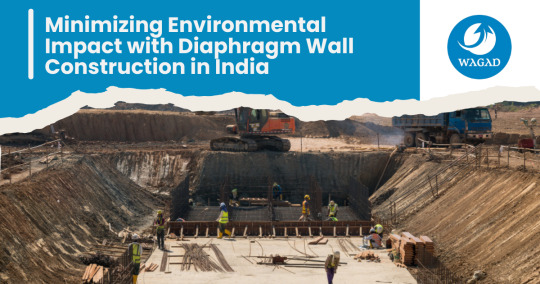
What is Diaphragm Wall Construction?
Diaphragm wall construction involves creating a reinforced concrete wall that acts as a retaining structure for excavation. This method is often used in urban settings to support deep excavations and is vital for projects like metro systems, high-rise buildings, and underground facilities.
Environmental Impacts
Soil and Water Pollution
Chemical Contaminants: The use of bentonite slurry in diaphragm wall construction can lead to soil and water contamination if not managed properly. Bentonite is essential for stabilizing the excavation but can cause environmental issues if it leaks into surrounding areas.
Groundwater Alteration: The process can alter groundwater flow patterns, potentially affecting local water tables and aquifers. This can lead to reduced water availability for surrounding areas.
Waste Management
Construction Debris: Diaphragm wall construction generates significant amounts of construction debris and spoil, which need proper disposal or recycling. Inadequate management can lead to increased landfill use and environmental degradation.
Noise and Vibration: The heavy machinery used in diaphragm wall construction produces noise and vibration, which can impact local communities and wildlife.
Energy Consumption
High Energy Use: The process of creating diaphragm walls requires substantial energy, both for the machinery and the production of construction materials. This high energy demand contributes to the carbon footprint of the construction process.
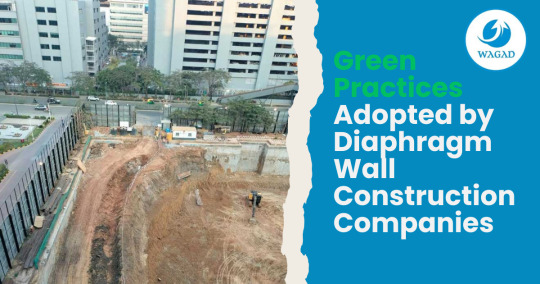
Mitigation Strategies
Improved Slurry Management
Recycling and Treatment: Implementing advanced recycling and treatment methods for bentonite slurry can minimize pollution and reduce the environmental impact.
Regular Monitoring: Frequent monitoring of soil and water quality during construction can help in early detection of potential contamination issues.
Sustainable Practices
Energy-Efficient Equipment: Utilizing energy-efficient machinery and adopting green construction practices can reduce the overall carbon footprint of diaphragm wall construction.
Waste Reduction: Implementing waste reduction strategies, such as recycling construction debris and minimizing unnecessary waste, is crucial for environmental sustainability.
Community Engagement
Public Awareness: Educating local communities about the potential impacts and benefits of diaphragm wall construction can help in gaining support and addressing concerns.
Noise and Vibration Control: Employing noise and vibration control measures can reduce the impact on nearby residents and wildlife.
Conclusion
Diaphragm wall construction is a vital technique for modern infrastructure projects, but it is not without environmental consequences. By understanding and addressing these impacts through improved practices and technologies, the construction industry in India can move towards more sustainable development, ensuring that urban growth does not come at the expense of environmental health. For More Information Visit, Wagad Infra-Projects.
#concretewalls#constructionexcellence#diaphragmwalls#highwayconstruction#wagadinfraprojects#infrastructuredevelopment#bridgeengineering#civilengineering#undergroundconstruction#construction planning#Best Diaphragmwalls Construction in Noida#Best Diaphragmwalls Construction in Delhi#Diaphragmwalls Construction in Jaipir
0 notes
Text
How does Wagad Infra Projects handle challenges during bridge construction?
We are adept at anticipating and managing challenges during bridge construction, such as difficult terrain, unexpected weather conditions, or logistical issues. Our team is trained to quickly adapt and find innovative solutions to keep the project on track. Through careful planning and continuous communication with stakeholders, we minimize disruptions and ensure smooth project execution.
#constructionexcellence#bridgeengineering#highwayconstruction#infrastructuredevelopment#diaphragmwalls#wagadinfraprojects#concretewalls#civilengineering#construction planning#UndergroundConstruction#IndiaInfrastructure
0 notes
Text
What is the typical process for bridge construction at Wagad Infra Projects?
Our bridge construction process involves several key stages:
Site Analysis and Design: We conduct thorough site assessments and work closely with engineers and architects to create robust, efficient designs.
Material Selection: We choose high-quality materials that meet the specific needs of the bridge, ensuring longevity and structural integrity.
Construction: Our experienced construction team follows the design blueprints meticulously, adhering to all safety standards and regulations.
Quality Control: Throughout the construction process, we implement strict quality control measures to ensure the bridge meets all required specifications.
Final Inspection and Handover: Upon completion, the bridge undergoes a final inspection before being handed over to the client.
#diaphragmwalls#concretewalls#bridgeengineering#highwayconstruction#wagadinfraprojects#constructionexcellence#infrastructuredevelopment#civilengineering#construction planning#UndergroundConstruction
0 notes
Text
The Pros and Cons of Diaphragm Wall Construction
Diaphragm walls are an essential component in modern construction, especially in projects requiring deep excavations like basements, tunnels, and underground stations. This technique, though advanced, comes with its own set of advantages and disadvantages.

Advantages of Diaphragm Wall Construction
High Strength and Stability: Diaphragm walls provide exceptional structural integrity, especially in areas with high water tables or unstable soil. Their ability to resist lateral pressures makes them ideal for deep excavations.
Water Tightness: These walls are excellent for water retention and cut-off, making them a preferred choice in projects near water bodies or where groundwater control is critical.
Space Efficiency: Diaphragm walls can serve dual purposes—as both the temporary support during excavation and the permanent foundation wall, saving time and space.
Noise and Vibration Reduction: Unlike other deep foundation techniques, diaphragm walls cause minimal noise and vibration, making them suitable for urban areas.

Disadvantages of Diaphragm Wall Construction
High Cost: The construction of diaphragm walls is more expensive than traditional methods due to the specialized equipment and expertise required.
Complex Installation: The process is complex, involving precise techniques like slurry trenching, which requires highly skilled labor and close monitoring.
Time-Consuming: The complexity of diaphragm wall construction can lead to longer project timelines, particularly in challenging soil conditions or congested urban environments.
Limited Accessibility: Repairs or modifications to diaphragm walls post-construction are challenging, often requiring extensive excavation and additional costs.
Applications in India
In India, diaphragm walls are increasingly used in major infrastructure projects, including metro stations, underground tunnels, and large commercial basements. The growing urbanization and demand for space-efficient solutions are driving their popularity despite the higher costs.
Conclusion
Diaphragm wall construction offers unparalleled benefits in terms of strength, stability, and space efficiency, making it a preferred choice for many challenging projects. However, the high costs and complex installation process are significant considerations. As urbanization continues, the demand for diaphragm walls in India is likely to grow, balancing their pros and cons in modern construction.
For more Visit Wagad Infra-Projects.
#concretewalls#diaphragmwalls#constructionexcellence#wagadinfraprojects#civilengineering#construction planning#infrastructuredevelopment
0 notes
Text
The Future of Urban Construction: Diaphragm Wall Technology in India
As urbanization accelerates and cities expand, the need for robust and efficient construction methods becomes increasingly crucial. One such advanced technique gaining traction in India is diaphragm wall construction. This method, known for its strength and versatility, is transforming the way we approach deep excavation and foundation work.

What is Diaphragm Wall Construction?
Diaphragm wall construction involves creating a continuous vertical barrier of reinforced concrete that supports the structure during excavation. This method is particularly useful in urban settings where space is limited, and the surrounding environment must be carefully protected.
Key Advantages of Diaphragm Walls
Stability in Challenging Conditions: Diaphragm walls provide exceptional stability in complex ground conditions. They are ideal for sites with high water tables or loose soil, as they prevent soil movement and water ingress.
Reduced Noise and Vibration: Unlike traditional excavation methods, diaphragm wall construction generates minimal noise and vibration. This is especially beneficial in densely populated areas where minimizing disruption is crucial.
Enhanced Safety: The continuous barrier created by diaphragm walls offers increased safety for both workers and nearby structures. It prevents collapses and protects against potential hazards during excavation.
Efficient Excavation: Diaphragm walls allow for deeper excavations and can support the construction of multi-level basements and underground facilities. This efficiency helps in maximizing the use of available space.
Applications of Diaphragm Wall Construction
Diaphragm walls are versatile and can be used in a variety of applications, including:
High-rise Buildings: Essential for constructing deep foundations and underground parking in skyscrapers.
Metro Projects: Crucial for tunneling and station construction in urban metro systems.
Waterfront Developments: Ideal for building structures near water bodies, where soil stability is a concern.

The Future of Diaphragm Wall Construction in India
India’s rapidly growing urban landscape presents both opportunities and challenges for construction professionals. Diaphragm wall technology is poised to play a significant role in addressing these challenges. With ongoing advancements and increasing adoption, we can expect to see more innovative uses of this technology in upcoming projects.
As cities continue to expand and infrastructure demands grow, diaphragm wall construction will remain a key player in creating safe, efficient, and sustainable urban environments. The benefits it offers in terms of stability, safety, and minimal disruption make it an attractive option for modern construction needs.
Conclusion
Diaphragm wall construction represents a significant advancement in the field of civil engineering. Its ability to handle complex excavation projects with minimal disruption and maximum safety positions it as a leading choice for construction in India’s burgeoning urban centers. As the technology evolves and becomes more widely adopted, it will undoubtedly shape the future of urban development in the country.
#constructionexcellence#diaphragmwalls#concretewalls#infrastructuredevelopment#bridgeengineering#wagadinfraprojects#civilengineering#highwayconstruction#construction planning
0 notes
Text
Empowering India's Infrastructure: Wagad Infraprojects' Road Construction Legacy
Discover Wagad Infraprojects Pvt Ltd's unparalleled expertise in revolutionizing India's road infrastructure. With a robust foundation in civil engineering, Wagad specializes in the comprehensive life-cycle management of roads and highways. Our projects span National Highways, State Highways, and intricate internal road networks, meticulously designed and executed to enhance connectivity and ensure safe, efficient transportation of people and goods nationwide.

Driven by innovation and powered by modern road construction machinery, Wagad Infra-projects sets benchmarks in quality and reliability, delivering sustainable solutions that endure. Join us in exploring how Wagad continues to shape the future of transportation infrastructure, paving the way for progress and connectivity across India.
#concretewalls#highwayconstruction#diaphragmwalls#constructionexcellence#bridgeengineering#infrastructuredevelopment#wagadinfraprojects#construction planning#CivilEngineering
0 notes
Text
Leading Innovation in Dam Construction: Wagad Infra Projects' Expertise in Diaphragm Walls
Understanding Diaphragm Walls in Dam Construction
In the realm of dam construction, diaphragm walls play a pivotal role in ensuring structural integrity and stability. As one of the key components of modern dam engineering, diaphragm walls are integral to managing groundwater seepage and providing robust foundation support. Wagad Infra Projects, renowned for its expertise in infrastructure development, utilises advanced techniques like diaphragm walls to enhance the durability and functionality of dams across diverse terrains.
What is a Diaphragm Wall?
A diaphragm wall is a reinforced concrete structure constructed vertically underground to form a barrier against water ingress and to support deep excavations. It acts as a barrier to groundwater flow and prevents soil movement, providing a stable foundation for dam structures. Typically, diaphragm walls are constructed using specialized equipment that ensures precision in excavation and concrete placement, adhering to stringent engineering standards.

Role in Dam Construction
In dam construction, diaphragm walls serve multiple critical functions:
Seepage Control: One of the primary functions of diaphragm walls in dams is to control seepage. By forming an impermeable barrier underground, they prevent water from seeping through the foundation or alongside the dam structure, thereby reducing the risk of erosion and maintaining reservoir water levels.
Foundation Support: Diaphragm walls provide robust foundation support by transferring structural loads to stable bedrock or suitable load-bearing strata. This enhances the overall stability of the dam, especially in regions with complex geological conditions.
Construction Efficiency: Compared to traditional methods, such as sheet piles or grouting, diaphragm walls offer superior construction efficiency. They can be constructed to considerable depths and lengths in a single continuous operation, reducing construction time and costs while ensuring high-quality results.
Integration with Dam Components: Diaphragm walls seamlessly integrate with other dam components, such as cutoff walls and spillways, contributing to the overall structural integrity and operational efficiency of the dam.
Construction Process
The construction of diaphragm walls for dams involves several meticulous steps:
Site Preparation: Detailed site investigation and soil analysis precede construction to determine the optimal design parameters.
Excavation: Specialised hydraulic grabs or trench cutters excavate trenches to the required depth and width under slurry support to prevent soil collapse.
Reinforcement and Concrete Placement: Steel reinforcement cages are lowered into the trenches, followed by the pouring of high-strength concrete under controlled conditions to form the diaphragm wall.
Quality Assurance: Stringent quality control measures, including monitoring of concrete mixtures and reinforcement placements, ensure adherence to design specifications and structural durability.
Advantages of Diaphragm Walls
The adoption of diaphragm walls in dam construction offers several advantages:
Enhanced Seepage Control: Effective barrier against groundwater seepage, minimizing maintenance and operational costs.
Structural Stability: Provides robust foundation support, ensuring long-term stability and resilience against geological forces.
Cost Efficiency: Reduces construction time and enhances project cost-effectiveness through optimized construction processes.
Environmental Sustainability: Minimizes environmental impact by reducing water loss and maintaining ecological balance.
Wagad Infra Projects: Leading Innovation in Dam Construction
Wagad Infra Projects stands at the forefront of innovation in dam construction, leveraging advanced technologies and engineering expertise to deliver sustainable infrastructure solutions. By integrating diaphragm walls into its projects, Wagad Infra ensures the longevity, efficiency, and environmental compatibility of dams, contributing to regional development and water resource management.
Conclusion
In conclusion, diaphragm walls represent a cornerstone of modern dam engineering, facilitating the construction of resilient structures that withstand the test of time. Wagad Infra Projects continues to uphold its commitment to excellence, driving progress in infrastructure development through pioneering solutions in dam construction.
For more Visit Wagad Infra-projects.
#WagadInfraprojects#HighwayConstruction#DiaphragmWalls#InfrastructureDevelopment#ConcreteWalls#ConstructionExcellence#EngineeringSolutions#BridgeEngineering
0 notes